“Soon shall We show them Our signs in the universe and in their own selves, until it becomes clear to them that this Qur’an is indeed the truth. Is it not enough that your Lord is a witness over everything?” (Qur’an;41:53); “Verily in the heavens and the earth are Signs for those who believe. (Qur’an; 45:3).
Introduction
In previous articles (1 & 2) various scientific aspects were discussed which lead to the existence of a Creator, The God. There are many more scientific evidence related with the creation of human and universe, some being explored here. The most popular is the theory of Evolution versus Creationism. The religious texts appears to be inclined to Creation, however some Muslim scholars find some some support for evolution as well. The all powerful God can adopt any one or combination of multiple methods to implement His plan of creation of universe and humanity. The atheists depend on “Theory of Evolution” to deny existence of any Creator or God. Dependence on “Theory” is itself unscientific because the “theories” are not “facts”. Here the modern concepts and Creation versus Evolution are being discussed which ultimately lead to existence of God. Harun Yahya, the Turkish scholar has done significant research in this field, which is being reproduced here, some overlap is unavoidable for better comprehension of subject.
The Fall of Atheism
There are significant turning points in the history of mankind. We are now living in one of them. Some call it globalization and some say that this is the genesis of the “information age.” These are true, but there is yet a more important concept than these. Although some are unaware of it, great advances have been made in science and philosophy in the last 20-25 years. Atheism, which has held sway over the world of science and philosophy since the 19th century is now collapsing in an inevitable way.
Atheism, the idea of rejecting God’s existence, has always existed from ancient times. But the rise of this idea actually began in the 18th century in Europe with the spread and political effect of the philosophy of some anti-religious thinkers. Materialists such as Diderot and Baron d’Holbach proposed that the universe was a conglomeration of matter that had existed forever and that nothing else existed besides matter. In the 19th century, atheism spread even farther. Thinkers such as Marx, Engels, Nietsche, Durkheim or Freud applied atheist thinking to different fields of science and philosophy.
The greatest support for atheism came from Charles Darwin who rejected the idea of creation and proposed the theory of evolution to counter it. Darwinism gave a supposedly scientific answer to the question that had baffled atheists for centuries: “How did human beings and living things come to be?” This theory convinced a great many people of its claim that there was a mechanism in nature that animated lifeless matter and produced millions of different living species from it.
Towards the end of the 19th century, atheists formulated a worldview that they thought explained everything; they denied that the universe was created saying that it had no beginning but had existed forever. They claimed that the universe had no purpose but that its order and balance were the result of chance; they believed that the question of how human beings and other living things came into being was answered by Darwinism. They believed that Marx or Durkheim had explained history and sociology, and that Freud had explained psychology on the basis of atheist assumptions.
However, these views were later invalidated in the 20th century by scientific, political and social developments. Many and various discoveries in the fields of astronomy, biology, psychology and social sciences have nullified the bases of all atheist suppositions.
In his book, God: The Evidence, The Reconciliation of Faith and Reason in a Postsecular World, the American scholar Patrick Glynn from the George Washington University writes:
The past two decades of research have overturned nearly all the important assumptions and predictions of an earlier generation of modern secular and atheist thinkers relating to the issue of God. Modern thinkers assumed that science would reveal the universe to be ever more random and mechanical; instead it has discovered unexpected new layers of intricate order that bespeak an almost unimaginably vast master design. Modern psychologists predicted that religion would be exposed as a neurosis and outgrown; instead, religious commitment has been shown empirically to be a vital component of basic mental health..
Few people seem to realize this, but by now it should be clear: Over the course of a century in the great debate between science and faith, the tables have completely turned. In the wake of Darwin, atheists and agnostics like Huxley and Russell could point to what appeared to be a solid body of testable theory purportedly showing life to be accidental and the universe radically contingent. Many scientists and intellectuals continue to cleave to this worldview. But they are increasingly pressed to almost absurd lengths to defend it. Today the concrete data point strongly in the direction of the God hypothesis.
Science, which has been presented as the pillar of atheist/ materialist philosophy, turns out to be the opposite. As another writer puts it, “The strict materialism that excludes all purpose, choice and spirituality from the world simply cannot account for the data pour in from labs and observatories.”
Here the conclusions arrived at by different branches of science are being briefly analyzed and it is being examined, to know as to, what the forthcoming “post-atheist” period will bring to humanity.
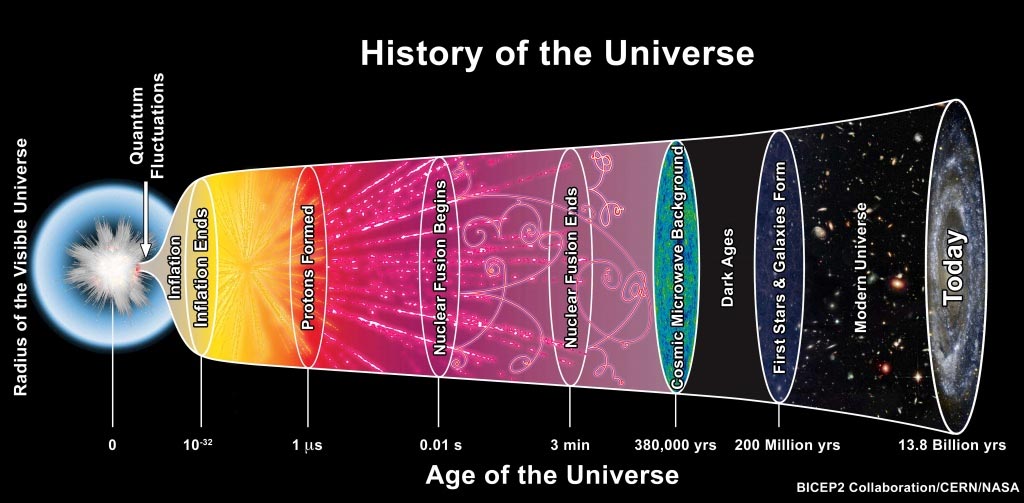
Cosmology: The Collapse of the Concept of An Eternal Universe And the Discovery of Creation
The first blow to atheism from science in the 20th century was in the field of cosmology. The idea that the universe had existed forever was discounted and it was discovered that it had a beginning; in other words, it was scientifically proved that it was created from nothing.
This idea of an eternal universe came to the Western world along with materialist philosophy. This philosophy, developed in ancient Greece, stated that nothing else exists besides matter and that the universe comes from eternity and goes to eternity. In the Middle Ages when the Church dominated Western thought, materialism was forgotten. However in the modern period, Western scientists and philosophers became consumed by a curiosity about these ancient Greek origins and revived an interest in materialism.
The first person in the modern age to propose a materialist understanding of the universe was the renowned German philosopher Immanuel Kant—even though he has not a materialist in the philosophical sense of the word. Kant proposed that the universe was eternal and that every possibility could be realized only within this eternity. With the coming of the 19th century, it became widely accepted that the universe had no beginning, and that there was no moment of creation. Then, this idea, adopted passionately by dialectical materialists such as Karl Marx, Friedrich Engels, came into the 20th century.
This idea has always been compatible with atheism. This is because to accept that the universe had a beginning would mean that God created it and the only way to counter this idea was to claim that the universe was eternal, even though this claim had no basis on science. A dogged proponent of this claim was Georges Politzer who became widely known as a supporter of materialism and Marxism in the first half of the 20th century through his book Principes Fondamentaux de Philosophie (The Fundamental Principles of Philosophy). Assuming the validity of the model of an eternal universe, Politzer opposed the idea of a creation:
The universe was not a created object, if it were, then it would have to be created instantaneously by God and brought into existence from nothing. To admit creation, one has to admit, in the first place, the existence of a moment when the universe did not exist, and that something came out of nothingness. This is something to which science can not accede.
By supporting the idea of an eternal universe against that of creation, Politzer thought that science was on his side. However, very soon, the fact that Politzer alluded to by his words, “if it is so, we must accept the existence of a creator”, that is, that the universe had a beginning, was proven.
This proof came as a result of the “Big Bang” theory, perhaps the most important concept of 20th century astronomy.
The Big Bang theory was formulated after a series of discoveries. In 1929, the American astronomer, Edwin Hubble, noticed that the galaxies of the universe were continually moving away from one another and that the universe was expanding. If the flow of time in an expanding universe were reversed, then it emerged that the whole universe must have come from a single point. Astronomers assessing the validity of Hubble’s discovery were faced with the fact that this single point was a “metaphysical” state of reality in which there was an infinite gravitational attraction with no mass. Matter and time came into being by the explosion of this mass-less point. In other words, the universe was created from nothing.
On the one hand, those astronomers who are determined to cling to materialist philosophy with its basic idea of an eternal universe, have attempted to hold out against the Big Bang theory and maintain the idea of an eternal universe. The reason for this effort can be seen in the words of Arthur Eddington, a renowned materialist physicist, who said, “Philosophically, the notion of an abrupt beginning to the present order of Nature is repugnant to me”. But despite the fact that the Big Bang theory is repugnant to materialists, this theory has continued to be corroborated by concrete scientific discoveries. In their observations made in the 1960’s, two scientists, Arno Penzias and Robert Wilson, detected the radioactive remains of the explosion (cosmic background radiation). These observations were verified in the 1990’s by the COBE (Cosmic Background Explorer) satellite.
In the face of all these facts, atheists have been squeezed into a corner. Anthony Flew, an atheist professor of philosophy at the University of Reading and the author of Atheistic Humanism, makes this interesting confession:
Notoriously, confession is good for the soul. I will therefore begin by confessing that the Stratonician atheist has to be embarrassed by the contemporary cosmological consensus. For it seems that the cosmologists are providing a scientific proof of what St. Thomas contended could not be proved philosophically; namely, that the universe had a beginning. So long as the universe can be comfortably thought of as being not only without end but also without beginning, it remains easy to urge that its brute existence, and whatever are found to be its most fundamental features, should be accepted as the explanatory ultimates. Although I believe that it remains still correct, it certainly is neither easy nor comfortable to maintain this position in the face of the Big Bang story.
An example of the atheist reaction to the Big Bang theory can be seen in an article written in 1989 by John Maddox, editor of Nature, one of the best-known materialist-scientific journals.
In that article, called “Down With the Big Bang,” Maddox wrote that the Big Bang is “philosophically unacceptable,” because “creationists and those of similar persuasions… have ample justification in the doctrine of the Big Bang.” He also predicted that the Big Bang “is unlikely to survive the decade ahead.” However, despite Maddox’ hopes, Big Bang has gained credence and many discoveries have been made that prove the creation of the universe.
Some materialists have a relatively logical view of this matter. For example, the English materialist physicist, H.P. Lipson, unwillingly accepts the scientific fact of creation. He writes:
I think …that we must…admit that the only acceptable explanation is creation. I know that this is anathema to physicists, as indeed it is to me, but we must not reject that we do not like if the experimental evidence supports it.
Thus, the fact arrived at finally by modern astronomy is this: time and matter were brought into being by an eternally powerful Creator independent of both of them. The eternal power that created the universe in which we live is God who is the possessor of infinite might, knowledge and wisdom.
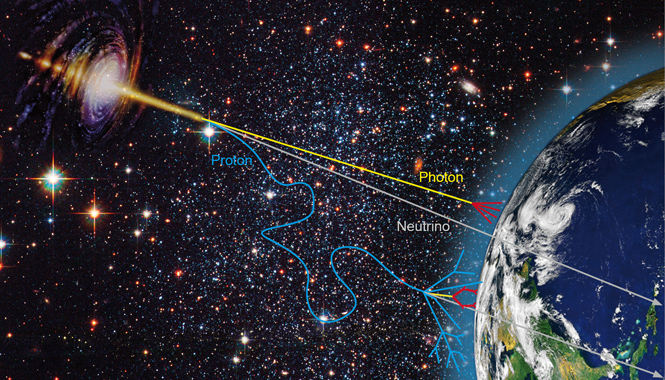
Physics and Astronomy: The Collapse of the Idea of a Random Universe and The Discovery of the Anthropic Principle
A second atheist dogma rendered invalid in the 20th century by discoveries in astronomy is the idea of a random universe. The view that the matter in the universe, the heavenly bodies and the laws that determine the relationships among them has no purpose but is the result of chance, has been dramatically discounted.
For the first time since the 1970’s, scientists have begun to recognize the fact that the whole physical balance of the universe is adjusted delicately in favor of human life. With the advance of research, it has been discovered that the physical, chemical and biological laws of the universe, basic forces such as gravity and electromagnetism, the structure of atoms and elements are all ordered exactly as they have to be for human life. Western scientists have called this extraordinary design the “anthropic principle”. That is, every aspect of the universe is designed with a view to human life.
The Basics of the Anthropic Principle may be Summarized as follows
The speed of the first expansion of the universe (the force of the Big Bang explosion) was exactly the velocity that it had to be. According to scientists’ calculations, if the expansion rate had differed from its actual value by more than one part in a billion billion, then the universe would either have re-collapsed before it ever reached its present size or else have splattered in every direction in a way never to unite again. To put it another way, even at the first moment of the universe’s existence there was a fine calculation of the accuracy of a billion billionth.
The four physical forces in the universe (gravitational force, weak nuclear force, strong nuclear force, and electromagnetic force) are all at the necessary levels for an ordered universe to emerge and for life to exist. Even the tiniest variations in these forces (for example, one in 1039, or one in 1028; that is—crudely calculated—one in a billion billion billion billion), the universe would either be composed only of radiation or of no other element besides hydrogen.
There are many other delicate adjustments that make the earth ideal for human life: the size of the sun, its distance from the earth, the unique physical and chemical properties of water, the wavelength of the sun’s rays, the way that the earth’s atmosphere contains the gases necessary to allow respiration, or the Earth’s magnetic field being ideally suited to human life.
This delicate balance is one of the most striking discoveries of modern astrophysics. The well known astronomer, Paul Davies, writes in the last paragraph of his book The Cosmic Blueprint, “The impression of Design is overwhelming.”
In an article in the journal Nature, the astrophysicist W. Press writes, “there is a grand design in the Universe that favors the development of intelligent life.”
The interesting thing about this is that the majority of the scientists that have made these discoveries were of the materialist point of view and came to this conclusion unwillingly. They did not undertake their scientific investigations hoping to find a proof for God’s existence. But most of them, if not all of them, despite their unwillingness, arrived at this conclusion as the only explanation for the extraordinary design of the universe.
In his book, The Symbiotic Universe the American astronomer, George Greenstein, acknowledges this fact:
How could this possibly have come to pass [that the laws of physics conform themselves to life]? …As we survey all the evidence, the thought insistently arises that some supernatural agency or, rather Agency—must be involved. Is it possible that suddenly, without intending to, we have stumbled upon scientific proof of the existence of a Supreme Being? Was it God who stepped in and so providentially crafted the cosmos for our benefit?
By beginning his question with “Is it possible”, Greenstein, an atheist, tries to ignore that plain fact that has confronted him. But many scientists who have approached the question without prejudice acknowledge that the universe has been created especially for human life. Materialism is now being viewed as an erroneous belief outside the realm of science. The American geneticist, Robert Griffiths, acknowledges this fact when he says, “If we need an atheist for a debate, I go to the philosophy department. The physics department isn’t much use.”
In his book Nature’s Destiny: How the Laws of Biology Reveal Purpose in the Universe, which examines how physical, chemical and biological laws are amazingly calculated in an “ideal” way with a view to the requirements of human life, the well-known molecular biologist, Michael Denton writes:
The new picture that has emerged in twentieth-century astronomy presents a dramatic challenge to the presumption which has been prevalent within scientific circles during most of the past four centuries: that life is a peripheral and purely contingent phenomenon in the cosmic scheme.
In short, the idea of a random universe, perhaps atheism’s most basic pillar, has been proved invalid. Scientists now openly speak of the collapse of materialism. The supposition whose falsity God reveals in the Qur’an, was shown to be invalid by science in the 1970’::
“We did not create heaven and earth and everything between them to no purpose. That is the opinion of those who disbelieve…” (Qur’an, 38: 27)
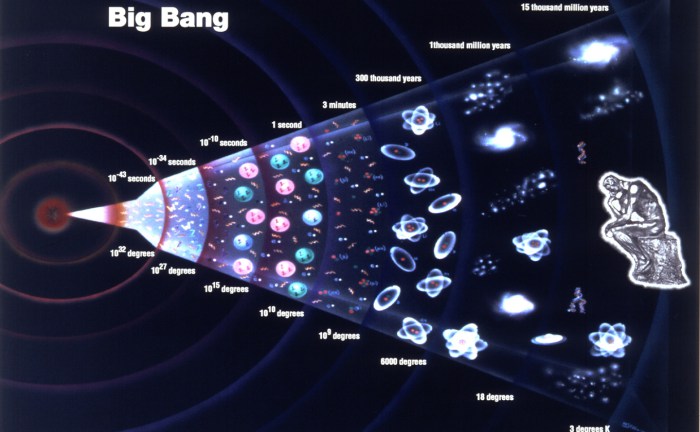
Where Did Everything Come From?
The popular theory referred to as the ‘Big Bang’ theory, narrated above is being viewed from another interesting angle:
The ‘Big Bang’ theory tries to explain the existence of the universe in an evolutionary manner having an initial beginning with an immense explosion of some gases or solid mass (normal explosions do not create well designed things). Some say there first was a void or ’nothingness’, or perhaps, some gases which exploded then from this everything in the universe simply began to evolve to the stage that we see now. There has never really been any solid evidence for this idea of ‘something out of nothing’ concept. Nor for that matter, the evolutionary theory itself.
Here effort has been made to explore the idea of creation from a purely logical standpoint using simple terminology without religious hype, emotional pre-convictions or superstitions.
What if someone called a ‘scientist’ tells you his ‘theory’ of how cars are made is like this: “A salvage yard on the south side of town blows up and all the metal pieces fly into the air and fall back down in one place forming a brand new Chevrolet Caprice automobile.. with no leftover parts and the motor is running..”
Or what if his theory for how a chair is made is: “An explosion occurs in a forest and the trees go flying into the air and then suddenly they combine with some flying cloth to make a beautiful chair and then it lands in a furniture showroom complete with matching table and lamp…”
He further explains that: “An earthquake in California’s ‘Silicon Valley’ causes the computer chips and circuit boards and other various parts to fall out of their boxes and off of their shelves and just come in place together as they are rolling around on the floor and form the most advanced technical computers existing on the earth?…”
Or what of his ‘Medicine Theory’? He now claims that: “A gas leak in a pharmacy warehouse causes a terrific explosion. All the different chemicals and substances just smash into each other in exactly the correct amounts to produce a miracle drug which cures everything from cancer to heart and liver disease, old age and warts?…”
Wait… there’s more to this one: “It is all in one formula, packaged in the bottles with labels and ready to sell with no mess left on the floor?…”
Now after all this exploding and excitement this ‘scientist’ tells you of a great place to relax and have something to eat. It is his favorite place and he calls it: “Burger Blast”!
He says: “You just go in and sit down and suddenly a ‘blast’ from the kitchen occurs and immediately a burger lands right in front of you with all the trimmings.. just the way you like it complete with fries, a drink and even your favorite dessert?..”
AND… “No one works at “Burger Blast”, it just runs itself, automatically cleaning itself and as you leave it scans your billfold for a valid credit card and charges your bank account for what you have eaten?…”
Now the question is: “Are you really going to accept any of this as ‘fact’?” Of course not! We wouldn’t believe a new car is made from flying junk; chairs don’t fall down from exploding trees; earthquakes do not produce computers and blasting burgers don’t rain down on us from above.
Question: So how come we don’t challenge a theory of something coming from nothing and then colliding in the cosmos to make the universe? Is it because of its tremendous magnitude that we have so little comprehension about it, that we are willing to accept any theory from a few telescope ‘peeping Toms’ to tell us that it came from ‘nothingness’? Or just some gases colliding and then… ‘Poof’!? Instant Universe? How?
Let us examine Creation or Explosion?
We can turn our attention to the earth and the heavens and make observations on our own without a ‘genius’ scientist telling us what we are seeing. And then the idea that nothing is sustaining the heavens and the earth! ‘It just runs itself’? How?
Think about the stars, the sun, the moon and the countless solar systems and galaxies in the universe. “Who or What created them in the first place?”
They continue to function and move with the utmost precision and accuracy. Who does this? Who keeps them gliding along on their courses and orbits preordained for them? Look closer to the heaven surrounding the earth. We call it the ‘sky’. Let us now bring our gaze a bit closer to earth. Consider the mountains and their majesty. Is there anything about these massive formations that may give us a clue as to the origin of creation? clouds? What are they? What about the water covering the earth? Is there another clue hiding beneath the seas? Water covers so much of the earth and even mixes with the land in rivers and streams. Yet is there something keeping it from mixing with itself? What is contained in this mystery of separation of waters?
What about us? Are we are part of creation? How did we begin? What develops us and causes us to live and die? How are we sustained? Think about the humans. How did we all get here? What is the nature of mankind? What causes us to act as we do? Are we ungrateful to the One who created us and sustains us? What is this clue? Think about yourself. Did you create yourself?
Who or What created all this? Who is sustaining everything? How do organisms reproduce themselves? How can a tree grow up out of a seed?
Islam tells us Allah is both The Creator & The Evolver, of all that exists. We know all things are from Allah. If He chose to use Big Bang to create universe, it was a controlled explosion with extreme precision for desired results, not an accident or chance!
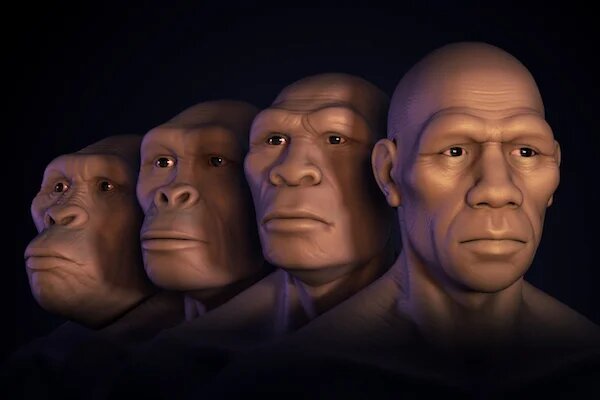
Theory of Evolution
As it is now understood that, the science has formulated a ‘Theory of Evolution’ to explain the creation of human being. Word ‘Theory’ means; something taken as true without proof for the sake of argument or investigation, its opposite is ‘fact’; a thing known for certain to have occurred or to be true; a datum of experience. Evolution is a gradual process in which something changes into a different and usually more complex or better form.
The idea of human evolution was first presented by the Muslim thinkers; Al Jahiz (776-868 C.E) and Ibn Miskawayh (930-1030 C.E) also mentioned by the great Sufi mystic and poet Maulana Jalal-ad-Din ar-Rumi (1207-1273 C.E): “Low in the earth, I lived in realms of sore and stone; And then I smiled in many tinted flowerers; Then roving with the wild and wandering hours, O’er earth and air and ocean’s zone, In a new birth, I dived and flew, And crept and ran, And all the secret of my essence drew Within a form that brought them all to view- And lo, a Man! And then my goal, Beyond the clouds, beyond the sky, In realms where non may change or die- In general form; and then away Beyond the bounds of night and day, And Life and Death, unseen or seen, Where all that is hath ever been, As One and Whole.” [Translation, quoted from “Reconstruction of Religious Thought in Islam” by Muhammad Iqbal, the great poet philosopher of 20th century].
The British naturalist Charles Darwin (1809-1882 C.E) further developed the theory of biological evolution, stating that all species of organisms arise and develop through the natural selection of small, inherited variations that increase the individual’s ability to compete, survive, and reproduce. Accordingly it is hypothesize that: ‘An evolutionary divergence exist between the lineages of humans and the great apes (Pongidae) on the African continent 5–8 million years ago. Homo habilis inhabited sub-Saharan Africa until 1.5 million years ago. Homo habilis, in turn, appears to have been supplanted by a taller and more humanlike species, Homo erectus. This species lived from 2,000,000 to 250,000 years ago and gradually migrated into Asia and parts of Europe. Archaic forms of Homo sapiens with features resembling those of both Homo erectus and modern humans appeared 400,000 years ago in Africa and perhaps parts of Asia, but fully modern humans emerged only 250,000–150,000 years ago, probably having descended from Homo erectus.’
Origin of Life
If a (human) species can develop only from a preexisting species (apes), through the process of evolution, then how did life originate? Among the many philosophical and religious ideas advanced to answer this question, one of the most popular was the theory of Spontaneous Generation, according to which, living organisms could originate from nonliving matter spontaneously. Research by Tyndall, together with findings of Pasteur (1822-1895), put an end to the doctrine of spontaneous generation. Biopoiesis is an other process by which living organisms are ‘thought’ to develop from nonliving matter. According to this theory, conditions were such that, at one time in Earth’s history, life was created from nonliving material, probably in the sea, which contained the necessary chemicals. During this process, molecules slowly grouped, then regrouped, forming ever more efficient means for energy transformation and becoming capable of reproduction. Thus the evolutionary theory claims that life started with the formation of the first living cell by chance. The claim that nonliving materials can come together to form life is an unscientific one, that has not been verified by any experiment or observation. Life is only generated from life. Each living cell is formed by the replication of another cell.
In the 1920s a Soviet biochemist, A.I. Oparin, suggested the concept of “Chemical Evolution.” He and other scientists suggested that life may have come from nonliving matter under conditions that existed on the primitive Earth, when the atmosphere consisted of the gases methane, ammonia, water vapour, and hydrogen. According to this concept, energy supplied by electrical storms and ultraviolet light may have broken down the atmospheric gases into their constituent elements, and organic molecules may have been formed when the elements recombined. Despite all his theoretical studies, Oparin was unable to produce any results to shed light on the origin of life. He says in his book The Origin of Life, published in 1936: ‘Unfortunately, however, the problem of the origin of the cell is perhaps the most obscure point in the whole study of the evolution of organisms.’ Professor Klaus Dose, the president of the Institute of Biochemistry at the University of Johannes Gutenberg, states: ‘More than 30 years of experimentation on the origin of life in the fields of chemical and molecular evolution have led to a better perception of the immensity of the problem of the origin of life on earth rather than to its solution. At present all discussions on principal theories and experiments in the field either end in stalemate or in a confession of ignorance.
Instead of accepting the reality, some scientists came up with the flimsy argument that under present biospheric conditions new forms of life are not likely to be created from nonliving matter. Others feel that life is continuously being created but that the new forms are not so well adapted to the environment as existing ones and are thus unable to compete successfully. Such illogical conclusion has been made-up; despite all the power of the human intellect, knowledge and technology, no one in the world has ever succeeded in forming a living cell by bringing inanimate materials together, not even in the most advanced laboratories. Thus this claim is contrary to the most basic principles of science, hence self contradictory. There is general consensus among the biologists that it may never be possible to determine experimentally how life originated or whether it originated only once or more than once.
Some scientists, on the basis of the ubiquitous genetic code found in all living organisms on Earth, presumed that life appeared only once and that all the diverse forms of plants and animals evolved from this primitive creation. However the genetic code, once thought to be identical in all forms of life, has been found to diverge in certain organisms and in the mitochondria of some eukaryotes (a single-celled or multicellular organism whose cells contain a distinct membrane-bound nucleus). The similar organs or similar genes among different species resemble each other, not because they have evolved by chance from a common ancestor, but because they have been designed deliberately to perform a particular function. Modern scientific discoveries show that the claim that similarities in living things are due to descent from a “common ancestor” is not valid, and that the only rational explanation for such similarities is “common design.”
In the 1990s, research into the genetic codes of living things worsened the quandary faced by the theory of evolution in this regard. In these experiments, instead of the earlier comparisons that were limited to protein sequences, “ribosomal RNA” (rRNA) sequences were compared. From these findings, evolutionist scientists sought to establish an “evolutionary tree.” However, they were disappointed by the results. All this leads to just one conclusion: Like all living things, plants were also created. From the moment they first emerged, all their mechanisms have existed in a finished and complete form. Terms such as ‘development over time,” “changes dependent on coincidences,” and “adaptations which emerged as a result of need,” which one finds in the evolutionist literature, have no truth in them at all and are scientifically meaningless. The thorough examination of the scientific evidence for the origin of life, and what emerges clearly demonstrates that life was not the result of chance, as claimed by Darwinism and materialist philosophy in general. Living species could not have evolved from one another through a string of coincidences. On the contrary, all living things were independently and flawlessly created. As the twenty-first century dawns, science offers but one answer to the question of the origin of life: Creation. The important thing is that science has confirmed the truth which religion has been witness to from the dawn of history to the present day.
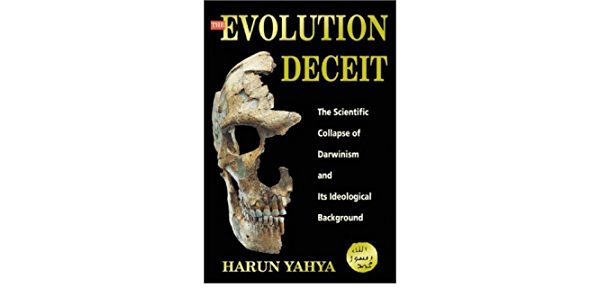
The Theory of Evolution in Nutshell
Some thing came from sea, gradually through evolution it developed into a creature, then small monkey, bigger monkey, chimpanzee and then human. This raises many questions; Who created monkeys through some creature from the sea? If some thing from sea became monkey why it could not directly become human being? If monkey became human then why there are still so many monkeys? Apart from fiction movies, are there still some monkeys (part human-part monkey) in the process of becoming human? If not, why? Is there some more advanced form of human? If not; Why the evolution process has stopped? Can the theory of evolution be reversed (retrogression), human to monkey? These questions are partially answered by evolutionist, through unscientific conjecture. God created the universe and all the living things in it from nothing. And it was God who created the first human (Adam) from clay and spirit and blessed him with countless characteristics, including the most important; knowledge & intellect. The later humanity is created out of the first couple. This truth has been sent down to man since the dawn of time by prophets, and revealed in holy books. Every prophet has told the communities he addressed that God created man and all living things. The Bible and the Qur’an all tell of the news of creation in the same way. Harun Yahya, the renowned Turkish scholar, in his famous books: ‘The Evolution Deceit’ & ‘Darwinism Refuted’; has systematically analyzed the Theory of Evolution in the light of modern science, citing all the authentic references:
The Evolution Deceit
According to Harun Yahya , the theory of evolution is a philosophy and a conception of the world that produces false hypotheses, assumptions and imaginary scenarios in order to explain the existence and origin of life in terms of mere coincidences. The roots of this philosophy go back as far as antiquity and ancient Greece.
All atheist philosophies that deny creation, ectly or in ectly embrace and defend the idea of evolution. The same condition today applies to all the ideologies and systems that are antagonistic to religion.
The evolutionary notion has been cloaked in a scientific disguise for the last century and a half in order to justify itself. Though put forward as a supposedly scientific theory during the mid-19th century, the theory, despite all the best efforts of its advocates, has not so far been verified by any scientific finding or experiment. Indeed, the “very science” on which the theory depends so greatly has demonstrated and continues to demonstrate repeatedly that the theory has no merit in reality.
Laboratory experiments and probabilistic calculations have definitely made it clear that the proteins from which life arises cannot have been formed by chance. The cell, which supposedly emerged by chance under primitive and uncontrolled terrestrial conditions according to evolutionists, still cannot be synthesized even in the most sophisticated, high-tech laboratories of the 20th century. Not a single “transitional form”, creatures which are supposed to show the gradual evolution of advanced organisms from more primitive ones as neo-Darwinist theory claims, has ever been found anywhere in the world despite the most diligent and prolonged search in the fossil record.
Striving to gather evidence for evolution, evolutionists have unwittingly proven by their own hands that evolution cannot have happened at all!
The person who originally put forward the theory of evolution, essentially in the form that it is defended today, was an amateur English biologist by the name of Charles Robert Darwin. Darwin first published his ideas in a book entitled The Origin of Species by Means of Natural Selection in 1859. Darwin claimed in his book that all living beings had a common ancestor and that they evolved from one another by means of natural selection. Those that best adapted to the habitat transferred their traits to subsequent generations, and by accumulating over great epochs, these advantageous qualities transformed individuals into totally different species from their ancestors. The human being was thus the most developed product of the mechanism of natural selection. In short, the origin of one species was another species.
Darwin’s fanciful ideas were seized upon and promoted by certain ideological and political circles and the theory became very popular. The main reason was that the level of knowledge of those days was not yet sufficient to reveal that Darwin’s imaginary scenarios were false. When Darwin put forward his assumptions, the disciplines of genetics, microbiology, and biochemistry did not yet exist. If they had, Darwin might easily have recognized that his theory was totally unscientific and thus would not have attempted to advance such meaningless claims: the information determining species already exists in the genes and it is impossible for natural selection to produce new species by altering genes.
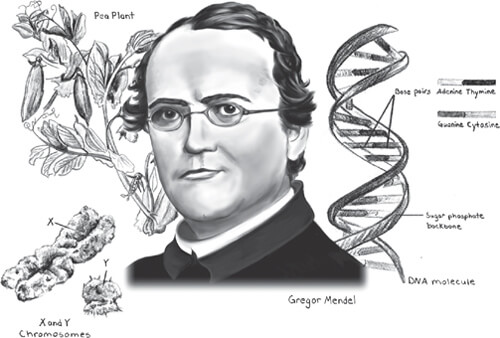
While the echoes of Darwin’s book reverberated, an Austrian botanist by the name of Gregor Mendel discovered the laws of inheritance in 1865. Although little known before the end of the century, Mendel’s discovery gained great importance in the early 1900s with the birth of the science of genetics. Some time later, the structures of genes and chromosomes were discovered. The discovery, in the 1950s, of the DNA molecule, which incorporates genetic information, threw the theory of evolution into a great crisis, because the origin of the immense amount of information in DNA could not possibly be explained by coincidental happenings.
Besides all these scientific developments, no transitional forms, which were supposed to show the gradual evolution of living organisms from primitive to advanced species, have ever been found despite years of search.
These developments ought to have resulted in Darwin’s theory being banished to the dustbin of history. However, it was not, because certain circles insisted on revising, renewing, and elevating the theory to a scientific platform. These efforts gain meaning only if we realize that behind the theory lie ideological intentions rather than scientific concerns.
Nevertheless, some circles that believed in the necessity of upholding a theory that had reached an impasse soon set up a new model. The name of this new model was Neo-Darwinism. According to this theory, species evolved as a result of mutations, minor changes in their genes, and the fittest ones survived through the mechanism of natural selection. When, however, it was proved that the mechanisms proposed by Neo-Darwinism were invalid and minor changes were not sufficient for the formation of living beings, evolutionists went on to look for new models. They came up with a new claim called “punctuated equilibrium” that rests on no rational or scientific grounds. This model held that living beings suddenly evolved into another species without any transitional forms. In other words, species with no evolutionary “ancestors” suddenly appeared. This was a way of describing creation, though evolutionists would be loath to admit this. They tried to cover it up with incomprehensible scenarios. For instance, they said that the first bird in history could all of a sudden inexplicably have popped out of a reptile egg. The same theory also held that carnivorous land-dwelling animals could have turned into giant whales, having undergone a sudden and comprehensive transformation.
These claims, totally contradicting all the rules of genetics, biophysics, and biochemistry are as scientific as fairy-tales of frogs turning into princes! Nevertheless, being distressed by the crisis that the Neo-Darwinist assertion was in, some evolutionist paleontologists embraced this theory, which has the distinction of being even more bizarre than Neo-Darwinism itself.
The only purpose of this model was to provide an explanation for the gaps in the fossil record that the Neo-Darwinist model could not explain. However, it is hardly rational to attempt to explain the gap in the fossil record of the evolution of birds with a claim that “a bird popped all of a sudden out of a reptile egg”, because, by the evolutionists’ own admission, the evolution of a species to another species requires a great and advantageous change in genetic information. However, no mutation whatsoever improves the genetic information or adds new information to it. Mutations only derange genetic information. Thus, the “gross mutations” imagined by the punctuated equilibrium model, would only cause “gross”, that is “great”, reductions and impairments in the genetic information.
The theory of punctuated equilibrium was obviously merely a product of the imagination. Despite this evident truth, the advocates of evolution did not hesitate to honor this theory. The fact that the model of evolution proposed by Darwin could not be proved by the fossil record forced them to do so. Darwin claimed that species underwent a gradual change, which necessitated the existence of half-bird/half-reptile or half-fish/ half-reptile freaks. However, not even one of these “transitional forms” was found despite the extensive studies of evolutionists and the hundreds of thousands of fossils that were unearthed.
Evolutionists seized upon the model of punctuated equilibrium with the hope of concealing this great fossil fiasco. As we have stated before, it was very evident that this theory is a fantasy, so it very soon consumed itself. The model of punctuated equilibrium was never put forward as a consistent model, but rather used as an escape in cases that plainly did not fit the model of gradual evolution. Since evolutionists today realize that complex organs such as eyes, wings, lungs, brain and others explicitly refute the model of gradual evolution, in these particular points they are compelled to take shelter in the fantastic interpretations of the model of punctuated equilibrium.
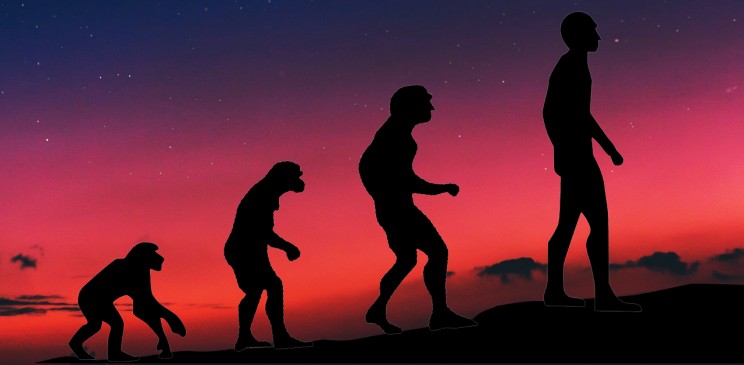
No Fossil Record to Verify the Theory of Evolution
The theory of evolution argues that the evolution of a species into another species takes place gradually, step-by-step over millions of years. The logical inference drawn from such a claim is that monstrous living organisms called “transitional forms” should have lived during these periods of transformation. Since evolutionists allege that all living things evolved from each other step-by-step, the number and variety of these transitional forms should have been in the millions.
If such creatures had really lived, then we should see their remains everywhere. In fact, if this thesis is correct, the number of intermediate transitional forms should be even greater than the number of animal species alive today and their fossilized remains should be abundant all over the world.
Since Darwin, evolutionists have been searching for fossils and the result has been for them a crushing disappointment. Nowhere in the world – neither on land nor in the depths of the sea – has any intermediate transitional form between any two species ever been uncovered.
Darwin himself was quite aware of the absence of such transitional forms. It was his greatest hope that they would be found in the future. Despite his hopefulness, he saw that the biggest stumbling block to his theory was the missing transitional forms. This is why, in his book The Origin of Species, he wrote:
Why, if species have descended from other species by fine gradations, do we not everywhere see innumerable transitional forms? Why is not all nature in confusion, instead of the species being, as we see them, well defined?… But, as by this theory innumerable transitional forms must have existed, why do we not find them embedded in countless numbers in the crust of the earth?… But in the intermediate region, having intermediate conditions of life, why do we not now find closely-linking intermediate varieties? This difficulty for a long time quite confounded me.
Darwin was right to be worried. The problem bothered other evolutionists as well. A famous British paleontologist, Derek V. Ager, admits this embarrassing fact:
The point emerges that if we examine the fossil record in detail, whether at the level of orders or of species, we find – over and over again not gradual evolution, but the sudden explosion of one group at the expense of another.
The gaps in the fossil record cannot be explained away by the wishful thinking that not enough fossils have yet been unearthed and that these missing fossils will one day be found. Another evolutionist paleontologist, T. Neville George, explains the reason:
There is no need to apologize any longer for the poverty of the fossil record. In some ways, it has become almost unmanageably rich and discovery is outpacing integration… The fossil record nevertheless continues to be composed mainly of gaps.
Life Emerged on Earth Suddenly and in Complex Forms
When terrestrial strata and the fossil record are examined, it is seen that living organisms appeared simultaneously. The oldest stratum of the earth in which fossils of living creatures have been found is that of the “Cambrian”, which has an estimated age of 530-520 million years.
Living creatures that are found in the strata belonging to the Cambrian period emerged in the fossil record all of a sudden without any pre-existing ancestors. The vast mosaic of living organisms, made up of such great numbers of complex creatures, emerged so suddenly that this miraculous event is referred to as the “Cambrian Explosion” in scientific literature.
Most of the organisms found in this stratum have highly advanced organs like eyes, or systems seen in organisms with a highly advanced organization such as gills, circulatory systems, and so on. There is no sign in the fossil record to indicate that these organisms had any ancestors. Richard Monestarsky, the editor of Earth Sciences magazine, states about the sudden emergence of living species:
A half-billion years ago the remarkably complex forms of animals that we see today suddenly appeared. This moment, right at the start of Earth’s Cambrian Period, some 550 million years ago, marks the evolutionary explosion that filled the seas with the world’s first complex creatures. The large animal phyla of today were present already in the early Cambrian and they were as distinct from each other then as they are today.
Not being able to find answers to the question of how earth came to overflow with thousands of different animal species, evolutionists posit an imaginary period of 20 million years before the Cambrian Period to explain how life originated and “the unknown happened”. This period is called the “evolutionary gap”. No evidence for it has ever been found and the concept is still conveniently nebulous and undefined even today.
In 1984, numerous complex invertebrates were unearthed in Chengjiang, set in the central Yunnan plateau in the high country of southwest China. Among them were trilobites, now extinct, but no less complex in structure than any modern invertebrate.
The Swedish evolutionist paleontologist, Stefan Bengston, explains the situation as follows:
If any event in life’s history resembles man’s creation myths, it is this sudden diversification of marine life when multicellular organisms took over as the dominant actors in ecology and evolution. Baffling (and embarrassing) to Darwin, this event still dazzles us.
The sudden appearance of these complex living beings with no predecessors is no less baffling (and embarrassing) for evolutionists today than it was for Darwin 135 years ago. In nearly a century and a half, they have advanced not one step beyond the point that stymied Darwin.
As may be seen, the fossil record indicates that living things did not evolve from primitive to advanced forms, but instead emerged all of a sudden and in a perfect state. The absence of the transitional forms is not peculiar to the Cambrian period. Not a single transitional form verifying the alleged evolutionary “progression” of vertebrates from fish to amphibians, reptiles, birds, and mammals – has ever been found. Every living species appears instantaneously and in its current form, perfect and complete, in the fossil record.
In other words, living beings did not come into existence through evolution. They were created.
The Most Cherished Pieces of Evidence of Evolution are Proven to be Invalid. A four hundred and ten million-year-old Coelacanth fish fossil . Evolutionists claimed that it was the transitional form proving the transition of this fish from water to land. The fact that more than forty living examples of this fish have been caught in the last fifty years reveals that this is still a perfectly ordinary fish and that it is still living.
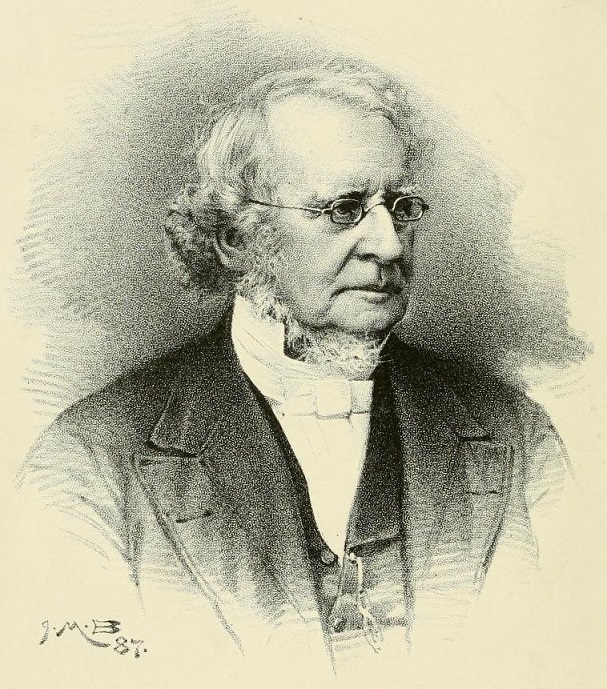
Refutation by Christians
Religiously motivated attacks started during Darwin’s lifetime. In 1874 Charles Hodge, an American Protestant theologian, published ‘What Is Darwinism?’, one of the most articulate assaults on evolutionism. Hodge perceived Darwin’s theory as “the most thoroughly naturalistic that can be imagined and far more atheistic than that of his predecessor Lamarck.” He argued that the design of the human eye evinces that “it has been planned by the Creator, like the design of a watch evinces a watchmaker.” He concluded that “the denial of design in nature is actually the denial of God.” Other Protestant theologians saw a solution to the difficulty in the idea that God operates through intermediate causes. The origin and motion of the planets could be explained by the law of gravity and other natural processes without denying God’s creation and providence. Similarly, evolution could be seen as the natural process through which God brought living beings into existence and developed them according to his plan. Thus, A.H. Strong, the president of Rochester (N.Y.) Theological Seminary, wrote in his Systematic Theology (1885): “We grant the principle of evolution, but we regard it as only the method of divine intelligence.” The brutish ancestry of man was not incompatible with his excelling status as a creature in the image of God. Strong drew an analogy with Christ’s miraculous conversion of water into wine: “The wine in the miracle was not water because water had been used in the making of it, nor is man a brute because the brute has made some contributions to its creation.”
The fundamentalist, evangelical Christians [An organized, militant Evangelical movement originating in the United States in 1920 in opposition to Liberalism and secularism, emphasizing the literally interpreted Bible as fundamental to Christian life and teachings] remain opposed to the theory of evolution. They believe in Creationism (also called Creation Science, or Scientific Creationism), a counter-revolutionary, fundamentalist theory or doctrine, that postulates that matter, the various forms of life, and the world were created by God out of nothing. Biblical Creationists believe that the story told in Genesis of God’s six-day creation of all things is literally correct. Scientific Creationists believe that a creator made all that exists, but they may not hold that the Genesis story is a literal history of that creation. Some conservative religious groups, however, have argued that Darwinian evolution alone cannot account for the complexity of the living world and have insisted that certain biblical descriptions of creation are revealed scientific truth. In the early 20th century, some areas in the U.S. banned the teaching of Darwinian theory, which led to the famous Scopes Trial (“Monkey Trial”) of 1925. Many creationists now work toward ensuring that schools and textbooks present evolution as a theory that is no more provable than biblical creation.
Arguments for and against Darwin’s theory
These arguments came from Roman Catholic theologians as well. Gradually, well into the 20th century, evolution by natural selection came to be accepted by the majority of Christian writers. Pope Pius XII in his encyclical Humani Generis (1950; “Of the Human Race”) acknowledged that biological evolution was compatible with the Christian faith, although he argued that God’s intervention was necessary for the creation of the human soul. In 1981 Pope John Paul II stated in an address to the Pontifical Academy of Sciences: ‘The Bible itself speaks to us of the origin of the universe and its make-up, not in order to provide us with a scientific treatise but in order to state the correct relationships of man with God and with the universe. Sacred scripture wishes simply to declare that the world was created by God, and in order to teach this truth it expresses itself in the terms of the cosmology in use at the time of the writer. Any other teaching about the origin and make-up of the universe is alien to the intentions of the Bible, which does not wish to teach how the heavens were made but how one goes to heaven’.
Islamic Perspective
The gradual process of evolution is not alien to the Muslim thinkers, according to Dr.Hamid Ullah; centuries before Darwin, the Muslim thinkers; Al Jahiz (776-868 C.E) and Ibn Miskawayh (930-1030 C.E) presented the idea of human evolution in their books titled; ‘Akhwan-al-Safa’ and ‘Alfawz ul Asghar’ which mention that: God first created the matter, which developed to mist or smoke, then water, subsequently developed in to solid mass like stones, then plantation, trees closer to animals. Amazingly these thinkers were not condemned for such non conventional ideas. The date palm tree is very close to the animals, it has distinct male and female trees. Even if all the trunks of normal tree are chopped off, it still survives but if the top of date palm tree is removed the tree dies; hence it is closest to the lowest form of animals and highest form of plants. It develops into the lowest form of animal, which develops into monkey, to human to angel. Finally is the return to God (Qur’an;2:46,156, 21:93, 23:60). It is generally perceived that; God created the first man with clay as a sculpture, breathed spirit, this was Adam, maybe it happened as such but God repeatedly mentions in Qur’an;40:67, 35:11, 22:5 and 18:37; that He created the man “from dust, then from a sperm”; obviously the sperm is not created from dust. The sperm is created from animal or man, hence God passed over all the intermediary stages by referring to the ‘dust’ as the origin, the medium is the sperm of man which grows as a child in the womb of women. Qur’an also mentions: “when He has created you in gradual stages (atwaaran)?” (Qur’an;71:4); the word atwaara is derivate of tatur (evolution), hence it may also imply that God created human through evolutionary stages i.e. solid mass – plants – animal: this being an other perspective of human creation.
The creation process is executed by God in two ways: Firstly; the instant execution through His Command (am’r) (Qur’an;3:47, 54:50). Secondly; through gradual evolution (khalaq), like the creation of universe in six eons (Qur’an;32:4, Exodus;20:11). Some of the modern non traditional scholars, well versed with the modern knowledge argue that, since the latest scientific information and knowledge was not available to the classical commentators, hence any new interpretation within the parameters of fundamental Islamic doctrine based on Qur’an and Sunnah may be acceptable. The concepts of evolution by Al Jahiz and Ibn Miskawayh were based on their thought process not the scientific research. The significance of knowledge is self evident, Allah says: “..Are the knowledgeable and the ignorant equal? In fact, none will take heed except the people of understanding.”(Qur’an;39:9);“He also made subservient to you whatever is between the heavens and the earth; all from Himself. Surely there are signs in this for those who think.”(Qur’an;45:13);“Will they not then ponder on the Qur’an?..” (Qur’an;4:82);“Allah has revealed the most beautiful message, a Book consistent in its verses yet repeating its teachings in different ways..”(Qur’an;39:23).
Some thinkers try to get the support for ‘developmental’ process of creation by non traditional interpretation of Qur’anic verses, by synthesizing the scientific information. Allah says: “Have they not pondered upon themselves?” (Qur’an;30:8); “Has there not been over Man a long period of Time when he was nothing—(not even) mentioned?” (Qur’an;76:1); “Now let man but think from what he is created!”(Qur’an;86:5); “And ye certainly know already the first form of creation: why then do ye not celebrate His praises?(Qur’an;56:62);“every living thing created from water”(Qur’an;21:30); “Indeed We created you, then We formed you,”(Qur’an;7:11); “And Allah hath caused you to grow as a growth from the earth,”(Qur’an;71:7). (also Qur’an;2:155-156, 3:142, 4:82, 6:134-136, 7:11, 10:4, 11:56-57, 14:19, 15:21, 21:30, 22:5-6,23:14, 27:64, 29:19-20, 30:8, 35:16-17, 38:28, 46:3, 55:49-50, 56:62, 65:12, 67:1-2, 70:40-41, 71:7,13-14, 76:1, 84:16, 86:5, 89:19, 91:9-10).
The famous Islamic philosopher, mystic and theologian Mohay ud Din Ibn Al Arabi (born, 1165, Spain died, 1240, Damascus) in his great work The Meccan Revelations, (a personal encyclopedia covering all the esoteric sciences in Islam and his own inner life), narrates a Hadith attributed to Prophet Muhammad (peace be upon him) who said: “One hundred thousand Adams came to this world- we are descendants of the last Adam”. According to an other tradition; Once Prophet Moses (peace be upon him) requested God for some wonder – God ordered Moses (peace be upon him) to reach a particular place, which was in a desert with no living being around. There he found a big ditch, Moses (peace be upon him) threw a stone into the ditch, an unknown voice from ditch asked; ‘Who are you?’. Moses (peace be upon him) was proud of his knowledge, he introduced himself narrating his ancestral link with Adam (peace be upon him). The mysterious voice said; “About which Adam you are talking about? after every 100,000 years some human comes here and throws a stone, once asked, he narrates same ancestral link which you have narrated.” Hence this ditch is being filled with stones, 100,000 Adams! The humanity has been created and destroyed 100,000 times. (God knows best).

The modern theory of evolution has two basic flaws
It observes in fine details the gradation of species from one-cell organisms up to the chimpanzee and man, who the theory considers to be the next in line. Advocates of the evolution theory have admitted this and sought to explain by speaking about a “missing link”. The other basic flaw in this theory is that it cannot be proven in any scientifically acceptable way. Its argument is rather didactic. It makes a huge jump from scientific observation to theorization about life and existence. Thus, it imposes its theory on scientific findings. Perhaps it is appropriate to state that Muslim scientists have observed the gradation of species, not only in the animal world but also in the world of plants. They referred to the fact that there is a very fine line which separated one species from the next. They also observed that there are gaps: The one which separates the highest from the lowest, i.e. the chimpanzee from man. However, Muslim scientists did not seek to impose any arbitrary theory of life on their findings. They simply attributed this gradation to its appropriate cause, the will of Allah, the Creator of all. However on the basis of information which Allah has clearly provided in the Qur’an:
“O mankind! We created you from a single pair of a male and a female, and made you into nations and tribes that you might get to know one another. Surely the noblest of you in the sight of Allah is he who is the most righteous. Allah is All-Knowledgeable, All-Aware.” (Qur’an;49:13).
The first human came into existence as a result of Allah’s will when He decided to appoint a vicegerent on earth. Adam, the first human was created of clay and Allah breathed of His spirit into him. Therefore, man is the result of a combination of clay and spirit. How did Allah breathe His spirit into Adam whom He made of clay and when did all this happen, these are the details which He has not chosen to disclose. The knowledge of such details will not be of any help to human in the fulfillment of the task i.e. the building of human life on earth, through His obedience (worship) and service to Allah. Had such information been of benefit to humanity in this regard, it would not have been withheld.
Reference/Links
http://justonegod.blogspot.com
http://rense.com/general62/expl.htm
http://www.divinecosmos.com/start-here/articles/362-groundbreaking-russian-dna-discoveries
http://www.fmbr.org/editoral/edit12_13/edit2_oct12.php
http://www.debate.org/debates/There-is-scientfic-proof-that-a-God-created-this-world/1/
http://www.nairaland.com/1159796/scientific-proof-god-exist
http://www.quranandscience.com/quran-science/signs-of-god
http://m.harunyahya.com/tr/Buku/29045/A-Call-for-Unity-Leaflet/chapter/8156/The-proofs-of-Gods-existence-pervade-the-entire-Universe
http://www.quranandscience.com/quran-science/signs-of-god
http://www.cpsglobal.org/content/scientific-proof-existence-god-0
http://www.quranandscience.com/quran-science/signs-of-god/193-the-evolution-deceit
http://www.quranandscience.com/quran-science/signs-of-god
http://harunyahya.com/en/Articles/3347/the-fall-of-atheism
http://www.quranandscience.com/quran-science/signs-of-god/193-the-evolution-deceit
http://justonegod.blogspot.com/2017/05/science-leads-to-god.html
http://justonegod.blogspot.com/2015/06/chapter-5-theory-of-evolution.html
Science Leads to God-1: https://goo.gl/tqtIbG Science Leads to God-2:https://goo.gl/LQ2nDQ Science Leads to God-3: Creation or Evolution: https://goo.gl/KUfKNt




